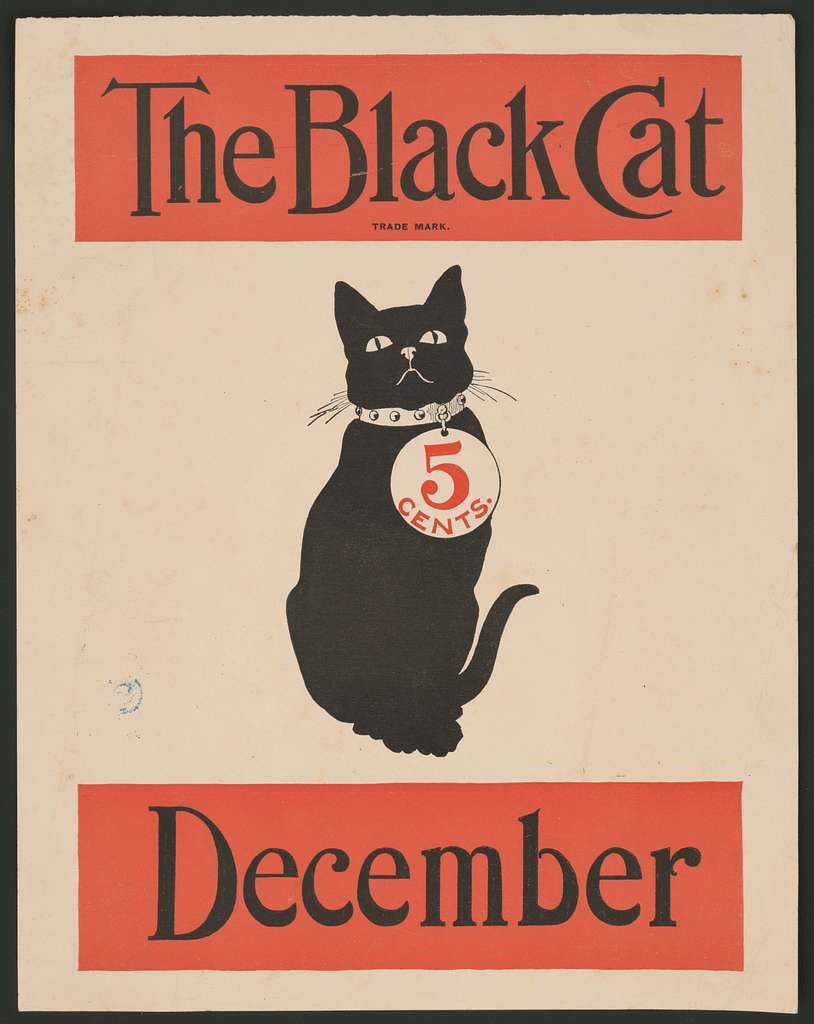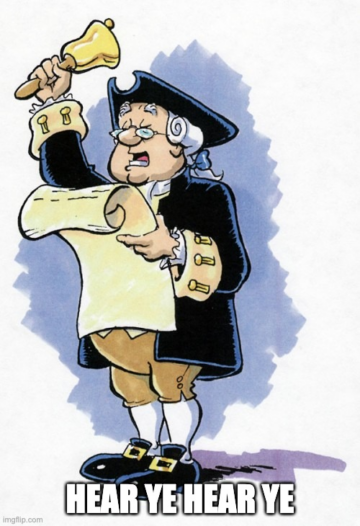
2023 has become yesteryear. 2024 has arrived. (Hope you all had a wonderful year beginning!). January is bidding adios now. In short, I am late in my sifting of SpicyIP pages. (Sorry!) But as they say, … ‘tis better late than never. So, here’s the “Decembers” post for the “Sifting Through SpicyIP Pages” series. We have traversed through Junes, Julys, Augusts, Septembers, Octobers, and Novembers and shared some stories like 10 years of the Google Books Library Project, the Presumption of validity of patents, Corruption in IP Offices, the Serial Crisis in India, Law Making via Leaked Documents, etc. Did you miss anything? Don’t worry. Just click on SpicyIP Flashbacks to catch up on what we’ve uncovered so far in our journey through these months.
Without further ado, here’s what I found in Decembers:
Rahul Cherian’s Legacy regarding Copyright Disability Exceptions: The name Rahul Cherian remains etched in the annals of Indian IP law, celebrated for his unwavering commitment to promoting access to copyrighted works. As noted in Prof. Basheer’s December 2013 post, Rahul was a dedicated campaigner, though his physical departure preceded the realization of his efforts into law. Nevertheless, his dedication bore fruit in the form of Section 52(1)(zb) – one of the broadest copyright “disability” exceptions. Over the years, the issue of disability exceptions has been extensively covered on the blog starting from the earliest discussions on the Right to Read campaign (see also here). It was also a time when WIPO’s discussion on the international treaty going in the background.
In the Indian context, the issue of copyright exceptions for disability goes back to 2006. Read Prof. Basheer’s post titled Andhaakaanoon highlighting some of the glaring issues in the initial proposed drafts, particularly that the exception shouldn’t be limited to the visually impaired, but include anyone unable to read “normal” format. Some of the recommendations were later accepted by the standing committee, which later became law as well in 2012.
At the international level, problems persisted particularly because of the disagreement among the representatives of the European Union and the United States. See also Swaraj’s post on this. In 2013, the Agreement was reached on the Treaty for the Visually Impaired! In 2014, India signed and ratified the treaty. Aparajita discussed the crucial aspects of the Marrakesh Miracle and Rahul Bajaj shared some Key Takeaways from the Marrakesh Experience. But if you want to check how the miracle of Marrakesh translated into concrete action and its Journey so far, Rahul Bajaj’s post should help. Speaking of this issue, L. Gopika Murthy’s post Accessibility of Public Libraries to Persons with Disabilities needs highlighting, arguing for making the public library facilities in the country more disabled-friendly. Similarly, one would not want to miss Dr. Sunanda Bharti’s post examining “Is Braille a ‘Language’ Capable of Translation, Reproduction or Adaptation under Copyright Law?”
Anyway, while we have come a long way with the help and dedication of stalwarts like Rahul Cherian, the path to access information is far, perhaps even farther than the distance we have covered so far.
(Sidenote: If you want to know more about him, you can watch “The Rahul Cherian Memorial Mashup”)
IP, Traditional Knowledge (TK), and in between? – Sifting through SpicyIP pages, I stumbled upon Madhulika Vishwanathan’s 2012 post critiquing the then-issued Guidelines enhancing standards of patentability for TK and Biological patents, which Prashant had previously examined against the backdrop of the revocation of the controversial Avesthagen. Interestingly, the issues of and around TK have attracted ample attention on the blog. For example, Copyrighting Yoga or Patenting Slokas were some known (non-)issues on this front.
For larger-than-law-type posts on this topic, check Prof. Basheer’s “Traditional Knowledge Protection: What is the way forward?” and a post pondering upon whether India achieved success in utilizing its traditional medicinal wisdom in a way comparable to the Chinese. Another oft-asked question here is regarding the Sui Generis framework for TK protection. But if your interest is in the specific case studies, Arogyapacha is worth reading, as it exemplifies bringing valuable TK to the market and sharing revenues with an indigenous community. Enough Policy stuff now! Check Sadhvi Sood’s post discussing Nestle’s patent application for Fennel Flower (Kala Jeera) vis-a-vis TK.
What next? Maybe, TKDL – Traditional Knowledge Digital Library which Prashant (see also here), Spadika, Tufty the Cat, Madhulika, and Balaji, etc. have nicely discussed. Most recently, Tejaswini discussed CSIR’s TKDL unit in opposition to Laila Impex’s application of an herbal composition. Enough big talk! Let’s make it light and think When IP Law and Cultural Appropriation Meet At a Crossroads … What will happen? Hmm … Dr. Sunanda Bharti and Sreyoshi Guha may have some answers.
In sum, ‘tis a very interesting topic. But like all stories here, it has to end here. But before that, check this all-in-one type post by Prashant Innovation and Regulation of Ayurvedic medicine: CSIR’s BGR-34, nimensulide in Ayurvedic medicine, and other such stories.
(Sidenote: I had time/space constraints while writing posts, but, I hope, you don’t have the same while reading posts. For, you’d not want to miss the discussions on the South Asian Basmati Brawls, Seed(y) Saga, the Turmeric Battle, Attars and Agarbattis, and Black hairstyles!)
National Pharmaceutical Policy(ies) and Pricing of Drugs – In 2011, this month, Shan Kohli discussed the Draft National Pharmaceuticals Policy which sought to establish a regulatory framework for drug pricing. (See also here). See how GoI was criticized for failing to finalize the drug policy and what the Supreme Court said about this policy. In 2014, the NPPA capped the prices of drugs, causing a stir in the pharmaceutical industry. Then what? The Pharma industry approached the court. But the Delhi High Court refuses to allow the pharma industry’s plea seeking a stay on the NPPA price cap decision. (See also here). Drug pricing has often arisen on several occasions. E.g. do you know the Parliamentary committee recommended the imposition of price caps on all life-saving drugs and slammed the Department of Pharmaceuticals over Drug Prices?
Wait. ‘Tis not done. The issue earlier came up in 2007 during the Novartis dispute. Prof. Basheer penned two particular posts, one called The Resurgence of Price Controls in India, and the other regarding the dichotomy between consumer groups and Domestic Industry on price control. While differential pricing is one proposed solution, concerns about parallel imports arise. Meaning, the fear that lower prices in developing countries could impact demand for lower pricing in the home market of the US and EU. Prof. Basheer, however, suggested that technological solutions can address this issue. Relevant here is also Kruttika’s post discussing KEI’s study on how companies can use voluntary licenses for non-competitive practices within the legal framework, underscoring the importance of Indian competition laws. For more on this competition bit, check Prof. Basheer’s IP vs Competition Law: Who Trumps Whom?
If one wishes to see a more detailed post, Prashant’s post “Dealing with the cost of cancer treatment in India: Are patents the problem?” is there. (And don’t forget to check the comment section!). If you need more here, Balaji Subramanian’s three-part post on Pharma Price Control and Policy Schizophrenia is your next stop (here’s Part II and Part III). See (or I’d say “hear”) civil society’s war cry for affordable Herceptin, a breast cancer drug sold by Roche (see also here).
Yet again, there’s a lot that needs highlighting here, but let’s keep it for another day.
2010’s International Efforts on Pandemics: Did you know Swaraj’s 2010 post on “Progress(?) in International Effort to Tackle Pandemics,” discussing the working of an “open-ended Working Group” on Pandemic Influenza Preparedness? If not, check it. The title remains relevant given Arnav Laroia’s post on the WHO’s Pandemic Accord. Interestingly, much before the COVID-19 pandemic, the issue has often made lines on the blog, particularly in the context of The Swine Flu Outbreak and Avian influenza. A decade later, the unforgettable COVID-19 pandemic unfolded, prompting Prashant to write “Why India Needs an IP Policy to Build a Strategic Stockpile for Pandemics.” (See also about Anti-COVID19 Drug Remdesivir.).
Unlike previous pandemics, the COVID-19 pandemic disrupted the socioeconomic framework of countries, bringing many IP issues to the fore beyond patents. E.g. check Namratha’s post on CovEducatio and Fair Use and Divij’s take on the Legality of Digital Libraries in a Lockdown. To get an idea of what I meant by “socioeconomic framework disruption,” check Swaraj’s post, Corona and IP – Looking for the Right(s) Answers. For more, check his post on Patent Politics in the Time of Corona, and Latha’s thoughts on How Best Can the Indian IP Office Help its Stakeholders during COVID-19. If the topic interests you, don’t miss Prashant’s post on the urgent need for an IP task force and IP Policy to deal with the mass shortage of masks, medical equipment, etc. Oh wait–speaking of health emergencies, let’s not miss Article 21 of the Indian Constitution, as Rahul Bajaj discussed Invoking the Fundamental Right to Health to Push Govt to Use Patent Law Levers during COVID-19.
Okay. Let’s wrap the story (an ongoing one?) then, though not without mentioning the unforgettable TRIPS Waiver! Anyway, ‘tis “my” story wrap, you can always parse more posts on COVID-19 from here.
Taxation, IP, and their complicated relationship (?) – “Tax and IP” doesn’t give a match-made-in-heaven type vibe, does it? At least, not for me. Maybe it’s my fear of The Income Tax Act, which, borrowing from Prashant’s 2009 post, “sends shivers down my spine for more than one reason.” One point that particularly piqued my attention in his above-mentioned post was that as per income tax, English is an Indian language. Not kidding!
Over the years, we have had several interesting posts on the “Tax and IP” theme. Take, for instance, this post questioning the constitutionality of service tax on copyright transactions, another pondering whether copyrights in logos are treated like trademarks for taxation, one debunking the myth that imported books in India are expensive due to high import duty, and yet another exploring the “VATability” of trademark licenses. All worth a deep dive. But if your calling is something more detailed, head to Balaji’s post on the evolution of the Indian tax regime’s treatment of IP licenses and Ashwini’s 2-part post on the taxation of transfers of the right to use IPs. Part 1 examines the status of “transfers of right to use” IP, and Part II discusses the applicability of indirect taxes in such transfers. If you wish to tread a more tricky terrain of taxation, then … check Prateek’s multi-part post discussing Qualcomm. v. ACIT (here, here, and here) and Adarsh Ramanujan’s two-part post on the Google AdWords Royalty Tax Case (here and here). Alright, enough for the day from my end, unless you want to check SC’s musing on the question of whether payments under distribution agreements/end-user license agreements amount to “royalty” under the Indian Income Tax Act, 1961.
That’s a wrap for this month! Did I miss anything? Very likely, yes. After all, the world is full of limits, particularly time and space. How about you? Share in the comments. Until next time, catch you soon! See you there.
- SEO Powered Content & PR Distribution. Get Amplified Today.
- PlatoData.Network Vertical Generative Ai. Empower Yourself. Access Here.
- PlatoAiStream. Web3 Intelligence. Knowledge Amplified. Access Here.
- PlatoESG. Carbon, CleanTech, Energy, Environment, Solar, Waste Management. Access Here.
- PlatoHealth. Biotech and Clinical Trials Intelligence. Access Here.
- Source: https://spicyip.com/2024/01/journey-through-decembers-on-spicyip-2005-present.html
- :has
- :is
- :not
- $UP
- 1
- 10
- 2005
- 2006
- 2009
- 2010
- 2011
- 2012
- 2013
- 2014
- 2024
- a
- About
- access
- achieved
- Act
- Action
- adaptation
- address
- affordable
- After
- again
- against
- agreements
- All
- all-in-one
- Alright
- also
- always
- am
- among
- amount
- an
- and
- Another
- answers
- anyone
- anything
- anyway
- Application
- ARE
- arise
- around
- arrived
- article
- AS
- asian
- aspects
- At
- attention
- backdrop
- background
- balaji
- BE
- became
- because
- become
- before
- BEST
- Better
- between
- Beyond
- Big
- Bit
- Blog
- Books
- Borrowing
- Breast cancer
- Bringing
- build
- but
- by
- called
- calling
- came
- Campaign
- CAN
- Cancer
- cancer treatment
- cap
- capable
- caps
- case
- Case Studies
- Catch
- causing
- celebrated
- check
- chinese
- click
- come
- comment
- comments
- commitment
- committee
- community
- Companies
- comparable
- competition
- complicated
- composition
- Concerns
- concrete
- Constitution
- constraints
- consumer
- context
- control
- controls
- controversial
- copyright
- Copyrights
- Corruption
- Cost
- could
- countries
- country
- Court
- covered
- COVID-19
- COVID-19 pandemic
- crisis
- cultural
- day
- deal
- decade
- December
- decision
- dedicated
- dedication
- deep
- deep dive
- Delhi
- Demand
- Department
- detailed
- developing
- Developing Countries
- DID
- digital
- Disability
- discussed
- discusses
- discussing
- discussion
- discussions
- Disruption
- distance
- distribution
- dive
- do
- documents
- does
- Doesn’t
- Domestic
- done
- Dont
- down
- dr
- drug
- Drugs
- due
- during
- during COVID-19
- e
- Earlier
- earliest
- effort
- efforts
- end
- English
- enhancing
- enough
- equipment
- establish
- etc
- EU
- European
- european union
- Even
- evolution
- Examines
- Examining
- example
- exception
- exemplifies
- expensive
- Exploring
- extensively
- facilities
- failing
- fair
- far
- fear
- finalize
- flower
- For
- Force
- fore
- form
- format
- Forward
- found
- Framework
- from
- front
- full
- fundamental
- further
- get
- Give
- given
- going
- Govt
- Group’s
- guidelines
- had
- happen
- Have
- head
- Health
- help
- here
- High
- highlighting
- him
- his
- Home
- hope
- How
- However
- HTML
- http
- HTTPS
- i
- idea
- if
- Impact
- import
- importance
- imports
- in
- include
- Income
- income tax
- india
- Indian
- Indian tax
- industry
- industry’s
- Influenza
- information
- initial
- instance
- interest
- interesting
- interests
- International
- into
- IP
- issue
- issues
- IT
- ITS
- January
- journey
- just
- Keep
- Know
- knowledge
- known
- language
- Late
- later
- Law
- Laws
- least
- Legacy
- Legal
- legal framework
- libraries
- Library
- License
- licenses
- light
- like
- likely
- Limited
- limits
- Long
- looking
- Lot
- lower
- make
- Making
- many
- Market
- Masks
- Mass
- max-width
- May..
- maybe
- me
- meaning
- meant
- medical
- medical equipment
- medicinal
- medicine
- Meet
- Memorial
- miracle
- miss
- Month
- months
- more
- most
- much
- my
- name
- National
- Need
- needs
- never
- Nevertheless
- next
- noted
- now
- occasions
- of
- Office
- offices
- often
- oh
- on
- ONE
- ongoing
- opposition
- or
- Other
- our
- over
- pages
- pandemic
- Pandemics
- Parallel
- particular
- particularly
- patent
- Patents
- path
- payments
- per
- perhaps
- persons
- Pharma
- Pharma Industry
- Pharmaceutical
- pharmaceuticals
- physical
- plato
- Plato Data Intelligence
- PlatoData
- Point
- policy
- politics
- Post
- Posts
- practices
- present
- previous
- previously
- price
- Prices
- pricing
- Problem
- problems
- project
- promoting
- proposed
- protection
- public
- Push
- question
- reached
- Read
- Reading
- realization
- reason
- recently
- recommendations
- recommended
- regarding
- Regulation
- regulatory
- relationship
- relevant
- remains
- Representatives
- reproduction
- revenues
- right
- roche
- royalty
- s
- Said
- same
- say
- Section
- see
- seeking
- serial
- Series
- service
- several
- Share
- shared
- sharing
- Short
- shortage
- should
- signed
- Similarly
- So
- so Far
- socioeconomic
- sold
- solution
- Solutions
- some
- something
- sought
- Space
- speaking
- specific
- stalwarts
- standards
- standing
- Starting
- States
- Status
- stay
- Stir
- Stop
- Stories
- Story
- Strategic
- studies
- Study
- success
- such
- Sui
- sum
- tackle
- Take
- Takeaways
- Task
- task force
- tax
- Taxation
- Taxes
- technological
- terrain
- than
- that
- The
- the world
- their
- theme
- then
- There.
- These
- they
- Think
- this
- though?
- Through
- time
- Title
- titled
- to
- topic
- trademark
- trademarks
- traditional
- Transactions
- transfers
- translated
- Translation
- tread
- treated
- treatment
- two
- type
- unable
- uncovered
- under
- unforgettable
- union
- unit
- United
- United States
- until
- unwavering
- upon
- urgent
- us
- use
- Utilizing
- validity
- Valuable
- very
- via
- Vibe
- visually
- voluntary
- vs
- want
- war
- was
- Watch
- Way..
- we
- were
- What
- What is
- when
- whether
- which
- while
- WHO
- will
- wisdom
- wish
- wishes
- with
- within
- without
- wonderful
- working
- works
- world
- worry
- worth
- would
- wrap
- write
- writing
- year
- years
- yes
- yet
- Yoga
- you
- Your
- youtube
- ZB
- zephyrnet








![[Sponsored] PatSeer Connect 2023: AI’s Role in Shaping the Future of Intellectual Property](https://platoaistream.net/wp-content/uploads/2023/09/sponsored-patseer-connect-2023-ais-role-in-shaping-the-future-of-intellectual-property-360x210.png)



